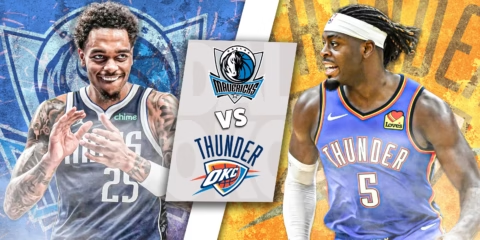Custom packaging is best for small businesses to stand out in today’s competitive market. It’s more than a protective shell for your products; it’s also an effective branding, marketing, and consumer interaction tool. Custom packaging not only protects delicate objects, but it also improves the shelf life of food items by protecting them from heat. Despite its numerous advantages, approximately 60% of small business owners continue to use generic packaging, passing up the potential to build their brand identification and increase consumer satisfaction.
This article delves into how custom packaging may help your small business stand out, overcome typical problems, and ultimately increase sales.
What is custom packaging for small businesses?
Custom packaging for small business is mainly designed to in shape the objects, protect them from damage, and attract customers with branding factors.
The packaging boxes have a brand logo, brand hues, fascinating photographs, and product statistics.
Why Is Custom Packaging Important in Business?
With the growth of online purchasing, competition is becoming tough. Businesses, especially startups, have a variety of problems while promoting and marketing their brand. Small firms and startups, in particular, are unable to invest significant amounts of resources in marketing, as large organizations can.
But that does not mean the end of the world. Small businesses may survive and gain popularity with customers by adopting low-cost custom package printing services, which results in greater branding, more attention, and more revenue.
If you are still afraid to choose custom packaging, you are losing a major amount of your money.
Type of Custom Packaging Boxes
As a result, it is critical to find certain typical types of custom packaging and use them when appropriate.
Corrugated boxes
Corrugated boxes are durable and robust due to their intelligent construction. They have a wavy Kraft layer sandwiched between flat cardboard layers to absorb shocks and preserve the contents within.
They are more suitable for moving things across vast distances. For small businesses, they are useful for storing and transferring things without altering the contents. It is an ideal sort of tertiary packaging in every manner.
Rigid boxes
After corrugated boxes, rigid boxes are available to meet your packaging and transportation requirements. They are strong as the name indicates, and have a high-quality appearance.
Customization improves rigid boxes, making them more suitable for packaging premium products. As a small company owner, you may utilize them as retail packaging to improve your client experience.
Mailer boxes
Mailer boxes, like custom rigid packaging, improve the whole consumer experience. They open and close easily without the use of tape, making them ideal for subscription services and online shopping.
They help both brands and consumers. For example, they are easy for customers to use and provide an excellent chance for branding small enterprises.
Tuck-Top Boxes
Tuck-top boxes are a popular custom packaging box for daily items or accessories. They offer a secure closing for products that customers mostly wish to access quickly and easily. Tuck-top boxes are ideal for packaging food products or bakery goods.
They provide a simple yet efficient solution for small businesses to service their clients.
Window Boxes
In terms of appearance and exhibition, window boxes come in first. These boxes have a glass window.
Window boxes are ideal for showcasing cosmetics, food, and toys. It’s an excellent approach for small businesses to attract clients while still providing high-quality items.
Sleeves
Custom sleeves are another popular sort of packaging that firms employ for branding. Their primary goal is not to preserve objects but to position your brand as a trustworthy service.
Sleeves go great with books, stationery, and other tiny objects like this. It’s an excellent choice for small businesses who don’t want to invest substantially in custom packaging but want to strengthen their identity.
Key Features of Custom packaging
The packaging is not limited to the outside box. Rather, it includes everything that distinguishes a product from the competition. For example, it is a blend of custom printing, labels, and different sorts of materials that draw in visitors and connect them to companies.
The most typical components of custom boxes include:
Designing and branding
It is the most significant aspect of custom packaging since it distinguishes each product in every manner. Your unique design incorporates colors, graphics, or product data to improve the product’s appearance. Branding elements are part of your marketing plan to boost your brand image.
Protecting the Product
The first major aim of packaging is to keep things safe during shipment and transit. So, specialized packaging boxes also ensure product safety. These include elements that hold the product in place and protect it from harm.
Packaging Material
The packaging material selected has a critical impact on the presentation of the product’s fineness and sustainability. Cardboard, paper, and Kraft paper are 3 popular choices for custom boxes, each with its texture, look, and sturdiness.
Final touches
Adding a finishing touch to custom boxes boosts the overall appeal of a product. Bright ribbons, stickers, and stamping techniques, for example, provide a product with a unique feel and appeal. In summary, such packaging boxes sell well on the market.
Starting with the fundamentals of custom packaging, small businesses have a chance to gain clients and create market confidence.
A step-by-step guide to designing custom packaging for small businesses
Here’s a comprehensive list of all the necessary actions that small businesses should take to transition from plain packaging to customized solutions.
1. Know Your Brand’s Values
Every brand develops a distinguishing feature that sets it apart. It keeps the brand from becoming lost in the crowd while yet maintaining a distinct personality. So, consider your brand values while deciding on the type of custom packaging you should use. In this manner, your packaging will resonate with your customers and connect them to your beliefs.
2. Pick Your Brand Colours
A consistent brand presentation is critical. To create your style, use brand colors that stand out from the competition. Custom color choices are significant in this context. So, select your color scheme and utilize it throughout your logo, website, packaging, and even items. Customers will recognize your items on a shelf since they will have become your identity over time.
3. Select the appropriate packaging style
As you can see above, there are several forms of custom packaging that are suitable for different sorts of items. Decide which sort of packaging is most suited to your product lines. Consider your product specifications, protection demands, and presentation requirements. Similarly, it applies to additional features such as inserts or premium finishes, which you should select based on your product’s demands.
4. Make it unique
Include personal notes, uplifting quotations, a thank you letter, or best wishes to make your customer feel special. It’s excellent not just for a customized unboxing experience, but also for building a strong relationship between customers and corporations. To increase repeat purchases, small businesses must go above and beyond to gratify their customers.
5. Use creative cushioning
Delicate and expensive items require additional protection while handling and delivery. Consider using inventive inserts to keep your sensitive items’ contents secured and safe. Each of them protects the contents from harm while also improving the consumer experience.
6. Add Small Surprises
Emotions exist, and if you can trigger them, you can win in the world of packaging. The easiest method to accomplish this is to include tiny surprises to excite customers. It might be a recently released product sample, a discount voucher, or a modest gift to make clients feel special. Remember that tiny firms may simply build their loyal consumer base in this manner.
7. Test your packaging
Before you explore wholesale custom packaging boxes, try your customized packaging to ensure that it performs as expected. Check to see if it protects your fragile things, looks excellent, and is easy to use. Get output from customers or friends to help you make an even better decision.
Custom Packaging Tips for Small Business
Following these basic ideas and tactics can help you make your custom packaging boxes stand out without breaking the bank.
Start small and test it first
Don’t rush into ordering wholesale custom packaging boxes at first. Instead, begin with a modest order and see how it works for your brand. This will save you both money and time.
Focus on Your Brand Message
custom packaging must be customer-based, it should also reflect your company’s identity. So, don’t forget to add your brand logo, brand colors, and brand message so that customers can link you with your products. It promotes trust and connection.
Make it both functional and attractive
The functionality of custom packaging boxes is equally crucial to Outlook. In other words, everything should be flawless. To wow customers, do not sacrifice substance, style, or additional features.
Consider the environment
When creating custom packaging, always go for sustainable materials. It not only protects the world, but it also draws more consumers who are conscious about their activities.
Create a memorable unboxing experience
The outside appearance of a handmade box astounds observers. However, small businesses must do more to gain clients. So, improve your unboxing experience with either a thank you message or a sample of another product.
Consider Wholesale Custom Boxes to Save more
For small businesses, it’s important to stick to the budget and plan things accordingly. However, converting from basic packaging boxes to personalized ones is generally more expensive. Though it also saves your marketing and advertising budget, it’s essential to keep things affordable.
Final words
Finally, custom packaging helps small businesses in one way or another. It assists firms in establishing distinctive market recognition and trust. It improves the customer’s unpacking experience and makes them feel unique. So, if you’re still utilizing generic packaging and attempting to succeed in the market, try custom packaging boxes to see the difference.
FAQ’s
What are the requirements for custom packaging?
Packaging may also require aspect lists, protection labels, or regulatory symbols relying on the industry.
How long does it take to produce and receive custom packaging?
Production and shipping of custom packaging typically take 2 to 6 weeks.







